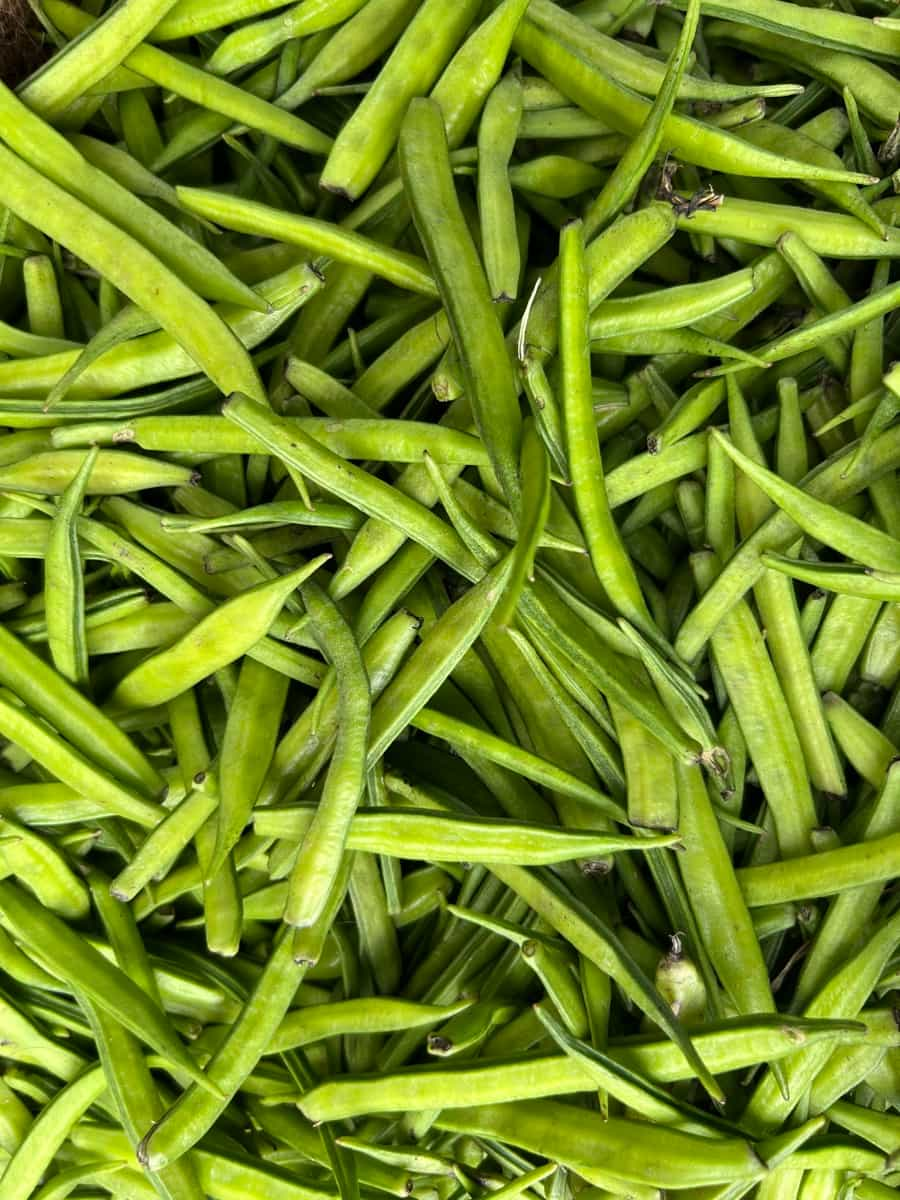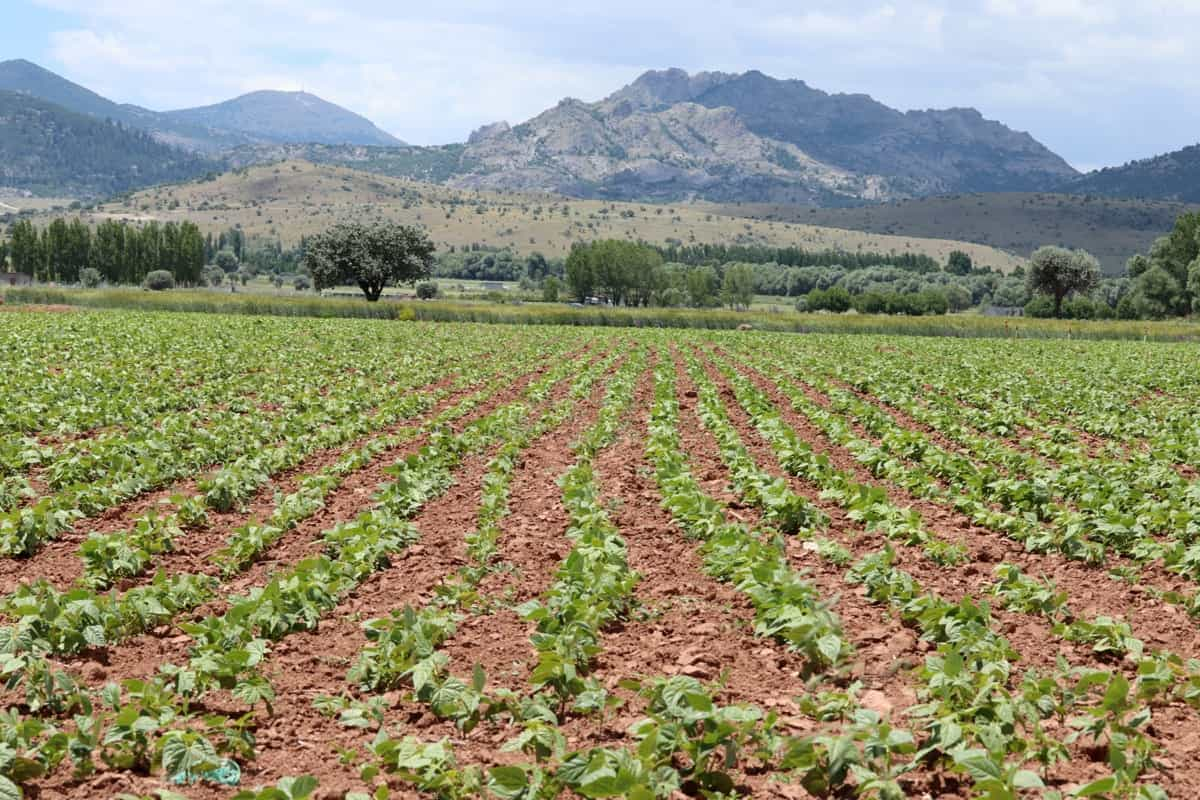Cluster bean, also known as Guar, is a key crop in dry and semi-dry areas. It’s tough against drought because it has deep roots and can recover well from water shortages. The seeds of this plant have about 30-33% gum in them. The Guar gum is used in foods like ice cream, baked goods, and dairy products. It’s also used in many industries, including pharmaceuticals, cosmetics, mining, textiles, paper, and oil drilling. People traditionally eat the pods of cluster beans as vegetables.

The plant, its seeds, and straw are nutritious food for livestock. Farmers also grow cluster beans as green manure and a cover crop. Since it’s a leguminous plant, it helps make the soil more fertile by fixing nitrogen from the air. The crop is usually grown in the rainy season, but it can also be grown in summer with irrigation. However, its yield in dry areas is low compared to its potential. Using better farming methods can greatly increase its productivity. In this blog post, we take you through the planting of Guar seeds to the project report of cluster beans.
Cluster Bean Cultivation Cost and Profit
Other Names of Cluster Beans
- Guar (most common alternative name).
- Cyamopsis tetragonoloba (scientific name).
- Gavar, Gawar, or Gwar (in various areas of India).
- Guwar (in Hindi).
- Kothavarangai (in Tamil).
- Goruchikkudu/Gokarakaya (in Telugu).
- Gavarphalli (in Marathi).
- Gorikayie (in Kannada).
High-Yielding Cluster Beans Varieties
| Guar Variety | Yield Potential |
| Pusa Sadabahar | High productivity |
| Pusa Sukomal | High yield potential |
| Pusa Naubahar | High yield potential |
| Pusa Sem 2 | High seed yield |
| RGC-1038 | High yield under organic conditions |
| RGC-1055 | Good yield under organic conditions |
| RGC-1066 | Promising yield under organic conditions |
| RGC-12-1 | Good yield potential under organic conditions |
| RGC-1001 | Good yield under organic conditions |
| RGC-1003 | Good yield under organic conditions |
Top Guar Growing States in India
| State Name | Guar Production |
| Rajasthan | Largest producer of Guar |
| Haryana | Significant production |
| Gujarat | Major growing region |
| Punjab | Notable production |
| Uttar Pradesh | Moderate production |
| Madhya Pradesh | Emerging growing state |
| Karnataka | Low production |
| Tamil Nadu | Low production |
In case you missed it: How to Increase Female Flowers in Cluster Beans/Guar Beans: Explained 10 Steps for More Yields and Profit

Climate and Soil Requirements
Cluster bean, a plant suited for warm climates, needs a warm season to grow. It germinates well when the temperature at planting is between 30 and 35 degrees Celsius. For good leaf growth, it likes temperatures between 32 and 38 degrees Celsius. However, too much heat during the flowering stage can cause flowers to drop early. It can handle heat up to 45-46 degrees Celsius.
This crop can grow in different types of soil. It does best in well-drained, upland, sandy loam and loam soils. Cluster beans struggle in very heavy, waterlogged soils and don’t do well in salty or alkaline soils either. Soils with a pH level between 7 and 8.5 are ideal for growing cluster beans.
How to Prepare the Land for Cluster Beans
For cluster bean seeds to germinate well, the field must be well prepared. The soil should be smooth, without weeds, and not too clumpy. You don’t need to make the soil extremely fine. Start by plowing the field deeply, about 20-25 cm, using a soil-turning plow or a disc harrow. This loosens the soil.
After that, do one or two more plowings in different directions. Then, use a planker to break down the soil and make it level. A well-leveled field helps with good drainage for strong root development.
Crop Rotation and Intercropping
In Rajasthan’s rainfed areas, cluster bean is usually grown with other crops like pearl millet, mung bean, moth bean, and sesame. However, some farmers grow cluster beans alone. A profitable way to farm is to intercrop cluster beans with pearl millet in a 2:1 row ratio. This method is more profitable than just growing pearl millet. Here are some crop rotation plans you can use while growing Gaur:
- Cluster beans, followed by pearl millet, repeated every two years in rainfed areas.
- Cluster beans, followed by wheat, in a yearly rotation for irrigated areas.
- Cluster bean, followed by cumin, in a yearly rotation for irrigated areas.
- A two-year rotation of cluster bean, then wheat, followed by cluster bean and cumin.
- Two-year rotation of cluster bean, then wheat, followed by mung bean and mustard.
- Two-year rotation of cluster bean, then cumin, followed by pearl millet and mustard.
- Two-year rotation of cluster bean, then wheat, followed by pearl millet and cumin.
Seed Rate, Treatment
The right amount of seeds is key to a good crop. For both the summer and Kharif seasons, the best seed rate is 15 kilograms per hectare. Treat the seeds with Trichoderma (4 grams per kilogram of seed), mancozeb, or carbendazim (2 grams per kilogram of seed), and then with chloropyriphos (2 milliliters per kilogram of seed).
Mix the seed with the right rhizobium culture at a rate of 600 grams for every 15 kilograms of seed. Use three packets (200 grams each) of rhizobium mixed in a Jaggery solution (250 grams in one liter of water). Coat the seeds evenly with this mixture, let them dry for 30 minutes in the shade, and plant them within 24 hours of this treatment.
How to Sow Cluster Bean Seeds
Many farmers use the broadcasting method to sow seeds. However, for even germination, maintaining the right number of plants, and easier care, it’s better to sow in rows. For branched varieties of cluster beans, use a spacing of 45 to 50 centimeters between rows and 10 centimeters between plants. You can sow with a seed drill or cultivator. For single-stem varieties, plant with a row-to-row distance of 30 centimeters.
In case you missed it: Top 10 Distinct Varieties of Cocoa Beans: Discover Different Types of Cocoa

Application of Manures and Fertilizers
Cluster bean, a type of legume, only needs a little nitrogen early on. For each hectare, you need 20 kg of nitrogen (N) and 40 kg of phosphorus (P2O5). When you plant, apply the full amount of these nutrients. Using integrated nutrient management is recommended for cluster bean crops.
Apply about 2.5 to 3 tons of compost or Farm Yard Manure (FYM) at least 2 weeks before planting. This helps the soil hold water better and provides all the nutrients the plants need. At planting time, put down a base layer of 10 kg of nitrogen and 20 kg of P2O5 per hectare. The fertilizer should be placed about 5 cm below the seed level. It’s also good to treat the seeds with specific rhizobium strains and phosphorus solubilizing bacteria (PSB) to help the crop grow better.
Common Pests and Diseases of Gaur Crop
| Pests/Disease Name | Type | Impact on Cluster Bean Crop |
| Aphids | Pest | Sucks sap from plants, and weakens them |
| Root Rot | Disease | Causes root decay, affects plant stability and nutrient absorption |
| Bacterial Blight | Disease | Leads to leaf wilting, drying and shedding |
| Leaf Spot | Disease | Creates spots on leaves, and affects photosynthesis |
| Pod Borer | Pest | Damages pods, and affects seed quality |
| Jassids | Pest | Sucks sap from leaves, causes leaf curl, and discoloration |
Irrigation/Water Management
Cluster beans usually grow in dry and semi-dry areas without much water. But if you have irrigation, use it when the crop needs water. It’s especially important to water the plants during flowering and seed formation and in dry regions to keep moisture in the soil. Plant the seeds after you’ve watered the field.
If the seeds don’t sprout well, water lightly again 1 week after planting. Water the crop about five times every 2 weeks after it sprouts. Make sure water doesn’t stand in the field. The crop might not do well if it’s too hot and dry when the seeds are forming. Watering during this time helps get a better yield in summer. Also, make sure the field can drain extra water well.
How to Control Weeds in Cluster Bean Plantation
Cluster bean crops, whether grown in summer or the Kharif season, are badly affected by different types of weeds, including grassy, broad-leaved, and sedges. These weeds can greatly lower the yield, even by up to 90%, because they compete with the crop for water, nutrients, and space. To avoid this, it’s important to keep the crop free from weeds for the first 30 to 35 days after planting. Removing weeds by hand is a very good way to control them. Doing this twice, once at 30 days and again at 50 days after sowing, usually keeps the crop free from weeds.
Gaur Yield per Acre
The yield of the Cluster beans depends on agro-climatic conditions, cultivation practices, and variety. An estimated yield with a high-yielding variety is around 10 to 15 quintals of green pods.
Cluster Beans Cost and Profit Analysis (ROI/Economics)
Cost of 1-Acre Cluster Bean Farming
| Cultivation Expense Category | Cost (in Rs.) |
| Cost of Seeds | 3000 |
| Land Preparation | 3000 |
| Sowing | 1500 |
| Weeding | 3000 |
| Pesticides | 3000 |
| Fertilizers and Manure | 5,000 |
| Miscellaneous Activities | 3,000 |
| Harvesting and Packing | 3,000 |
| Transportation | 1000 |
| Total Cost | 25,500 |
In case you missed it: How to Grow Yardlong Beans from Seed: A Comprehensive Guide for Beginners

Profit from 1-Acre Cluster Bean Farming
| Revenue/Profit Category | Amount (in Rs.) |
| Total Revenue | 50,000 |
| Total Cost | 25,500 |
| Net Profit | 24,500 |
Note: The above-mentioned figures are just for demonstration purposes, and actual cost and profit will change based on location, season, and market demand.
- Ultimate Guide to Ossabaw Island Hog: Breeding, Raising, Diet, and Care
- Ultimate Guide to Juliana Pig: Raising Facts, Size, Diet, Care, and Lifespan
- Raising Lleyn Sheep: Disadvantages, Price, Uses, Characteristics, and Care
- Ultimate Guide to Meishan Pig: Breed Facts, Breeding, Raising, and Care
- Ultimate Guide to Teacup Pigs: Raising, Diet, Lifespan, Cost, and Care
- Guide to Raising Poll Dorset Sheep: Facts, Profile, Characteristics, Uses, and Care
- Ultimate Guide to Bighorn Sheep: Characteristics, Diet, Lifespan, Breeding, and Lifecycle
- Ultimate Guide to Raising Katahdin Sheep: Farming Facts, Breed Profile, Uses, and Care
- Ultimate Guide to Raising Oreo Cows: Belted Galloways Farming Facts, Profile, Uses, and Care
Excellent article. Loved it. Thanks